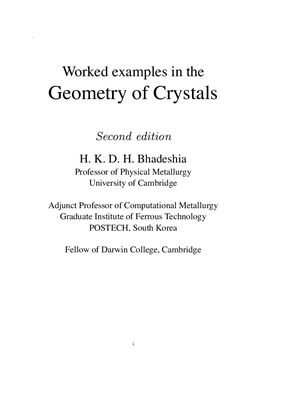The Institute of Metals, London, UK, 1987. 109 pp.
A large part of crystallography deals with the way in which atoms are arranged in single crystals. On the other hand, a knowledge of the relationships between crystals in a polycrystalline material can be fascinating from the point of view of materials science. It is this aspect of crystallography which is the subject of this monograph. The monograph is aimed at both undergraduates and graduate students and assumes only an elementary knowledge of crystallography. Although use is made of vector and matrix algebra, readers not familiar with these methods should not be at a disadvantage after studying appendix
1. In fact, the mathematics necessary for a good grasp of the subject is not very advanced but the concepts involved can be difficult to absorb. It is for this reason that the book is based on worked examples, which are intended to make the ideas less abstract.
A large part of crystallography deals with the way in which atoms are arranged in single crystals. On the other hand, a knowledge of the relationships between crystals in a polycrystalline material can be fascinating from the point of view of materials science. It is this aspect of crystallography which is the subject of this monograph. The monograph is aimed at both undergraduates and graduate students and assumes only an elementary knowledge of crystallography. Although use is made of vector and matrix algebra, readers not familiar with these methods should not be at a disadvantage after studying appendix
1. In fact, the mathematics necessary for a good grasp of the subject is not very advanced but the concepts involved can be difficult to absorb. It is for this reason that the book is based on worked examples, which are intended to make the ideas less abstract.

